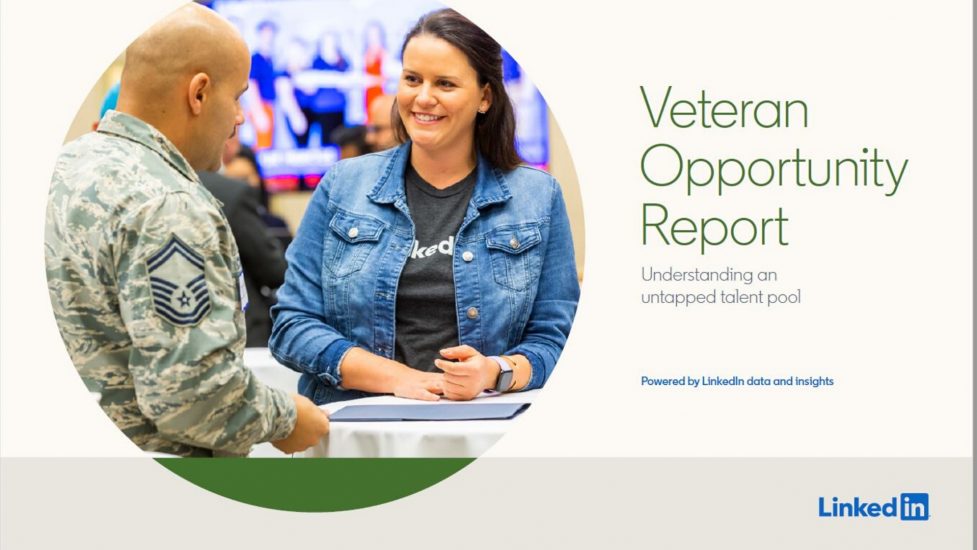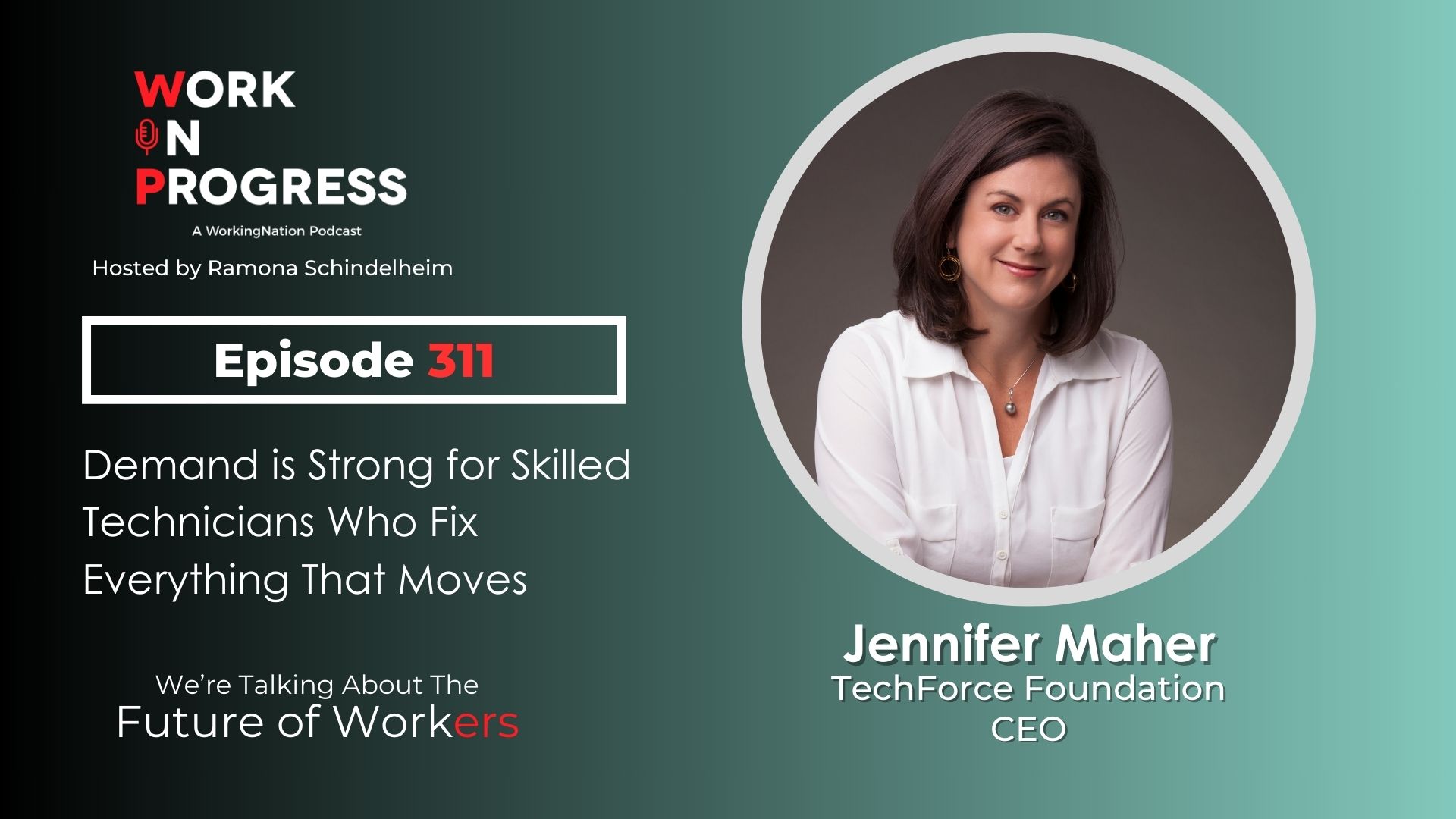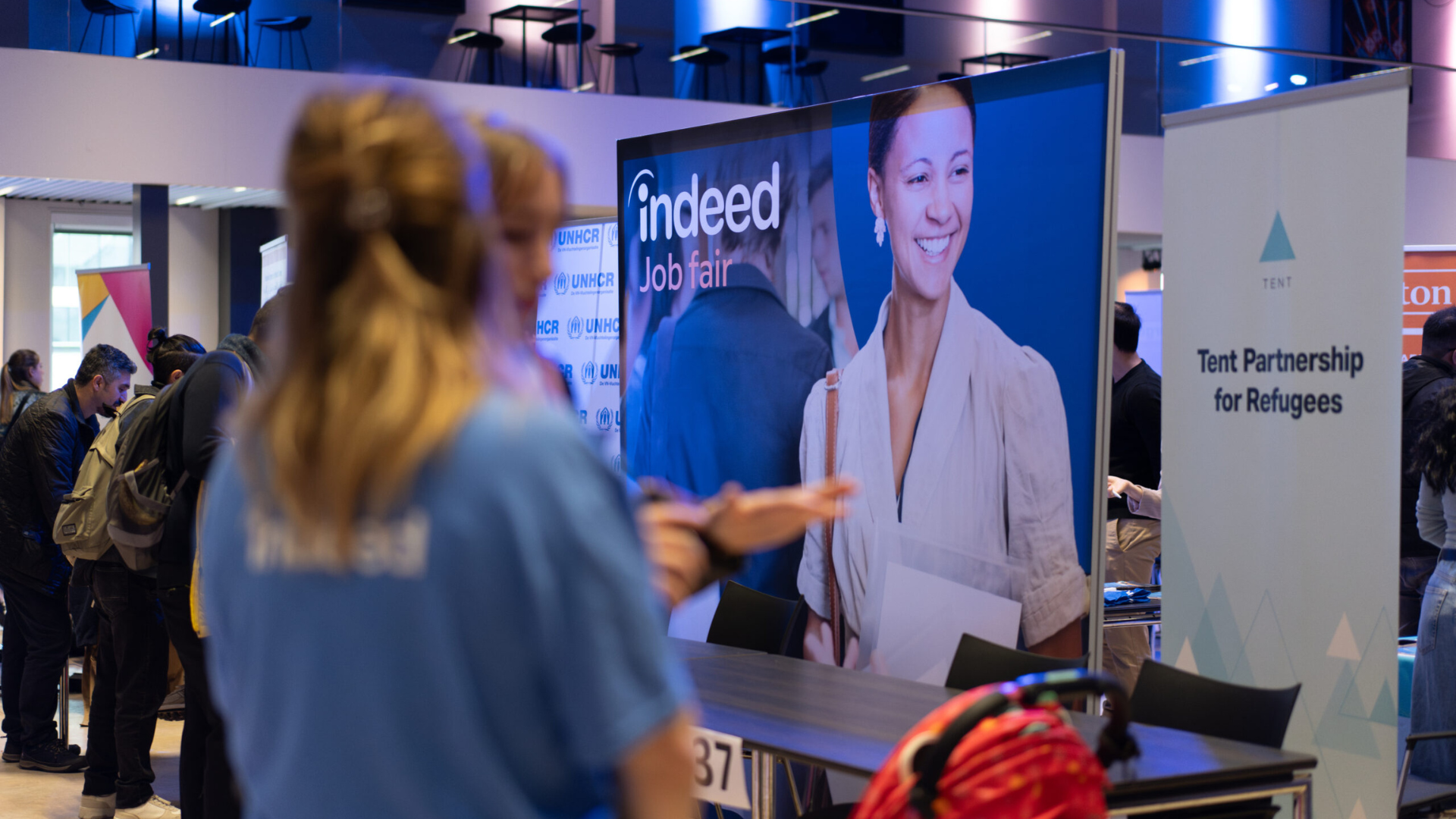More than 2.5 million veterans have a profile on LinkedIn. There are a lot of opportunities to connect these men and women with employers in their search for mutually beneficial employment. There are also opportunities to help make that connection more impactful.
In its Veterans Opportunity Report, the online job and professional networking social platform busts some myths about how veterans fit into the civilian workforce.
Retention, promotions, and underemployment

The surprising findings: compared to their non-veteran counterparts, veterans have a higher retention rate, staying at their first job 8.3 percent longer than non-veterans. Veterans are 39 percent more likely to be promoted early in their career. And they are 106 percent more likely to have a graduate degree or higher, and those with bachelor’s degrees have 2.9 times more work experience.
The report also found some opportunities for improvement. While unemployment has dropped since 2010, underemployment for veterans has increased significantly — by 38 percent. Potential effects of underemployment include lower wages, lower professional development, and because only a small portion of the veteran’s skills are being used, this could actually cost the employer, who isn’t receiving the full value of the employee with the military background.
Benefits of a diverse network
The very benefit that LinkedIn provides is where veterans can make proactive changes, says Sarah Roberts, head of LinkedIn’s Military and Veterans programs. When comparing the LinkedIn networks, the report found, for veterans, 28 percent of their network includes other veterans. For non-veterans, that percentage is just 1.2 percent.

“When we think of this concept of the military-civilian divide, we start to see a significant network gap,” says Roberts. Simply, if a hiring manager is not a veteran, she or he is less likely to have veterans in their circle of potential hires.
Because of this finding, one of the report’s recommendations is for veterans to expand their networks to include more non-veterans. As a former U.S. Army finance officer who used LinkedIn to find her first job after active duty, Roberts can attest this works when searching for a job.
“I know firsthand when I made my transition to my first private-sector job, it’s a huge hurdle. I used LinkedIn as a tool to set up informationals (informational interviews) and asked people to advise me on how I could find meaningful employment. I used LinkedIn at every single juncture,” Roberts says.
Hiring managers are encouraged to be pro-active
LinkedIn studied the network gap and found 70 percent of job seekers find employment through someone in their network. Hiring managers are encouraged to actively seek candidates outside their network, as well, by taking the Plus One Pledge.
Through the Plus One Pledge, LinkedIn asks everyone to extend their time, advice and network to someone not currently in their network, so those individuals can connect with people with different backgrounds. This could be especially helpful in connecting veterans with non-veterans, and vice versa.
LinkedIn also provides learning courses and tutorials aimed at hiring managers to help them understand a veteran’s background, and for job seekers with military backgrounds to help them write about their experiences in a way the private sector can understand.
Find a mentor
For advice on networking and other job-related queries, veterans who use LinkedIn will find one of the most active and engaged groups on the platform: the Veteran Mentor Network. With more than 100,000 members, it’s a virtual community ready to help.
“Often, we see great conversations happening there, as they’re jumping into the group and asking for help and connections, and immediately they have other service members now in the industry offering connections, feedback, tips, and tricks on transitioning, as well as who to get connected to specifically,” Roberts says.
Giving veterans another tool to find a good job
While veterans are close to 50 percent more engaged on LinkedIn than non-veterans, LinkedIn is giving them an extra boost with a free 12-month subscription to LinkedIn premium, a paid upgrade to an account that enables users to direct message those who aren’t yet in their network and provides enhanced insights to a user’s candidacy for a job. The benefit is also extended to military spouses, children, and caregivers.
“Not only is LinkedIn a powerful tool, but also being part of a socially responsible company and focusing on populations that have limited resources and pieces in terms of building a professional identity and community is super motivating and inspirational,” Roberts says. “I am humbled to be part of a company that is so committed to giving back.”
Follow more of our Vets Deserve Good Jobs coverage here.











